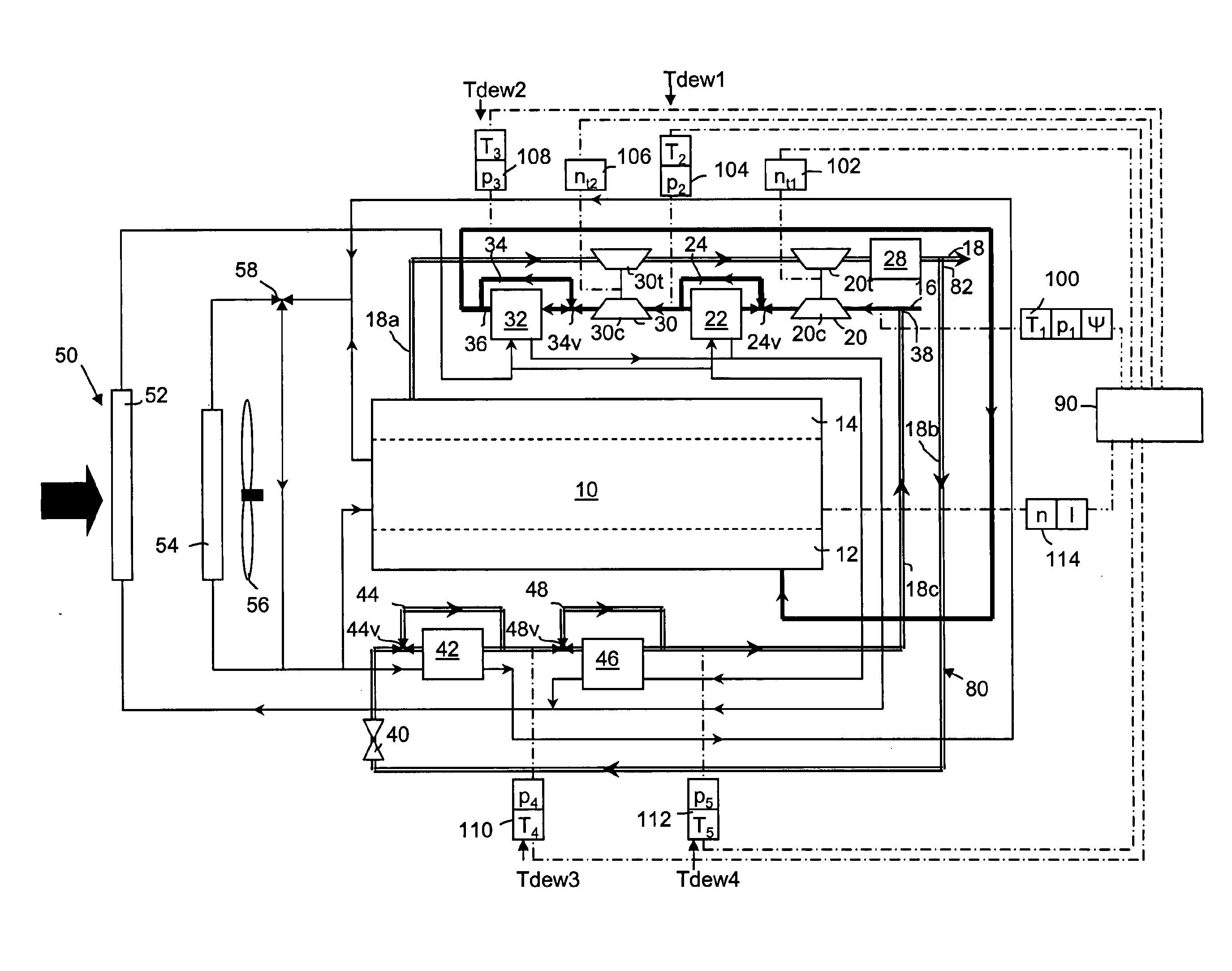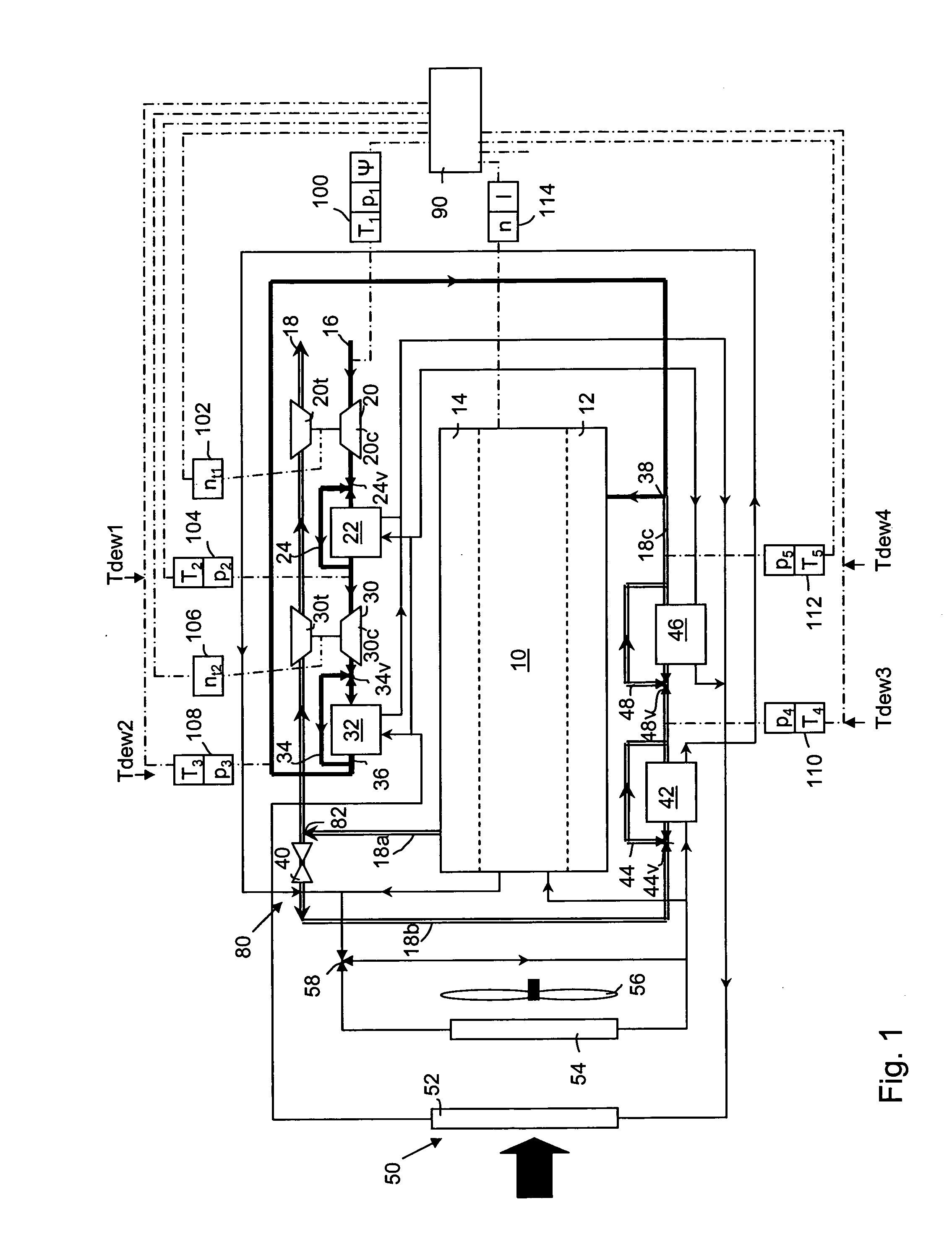Charge air system and charge air operation method
a technology of charge air and operation method, which is applied in the direction of charge feed system, combustion engine, machine/engine, etc., can solve the problems of increased risk of condensation in one or more exhaust heat exchangers, especially in the second turbocharger stage, and the compressor wheel is more susceptible to damage, so as to reduce the risk of condensation and reduce the chemical emission value , the effect of eliminating condensation build-up
- Summary
- Abstract
- Description
- Claims
- Application Information
AI Technical Summary
Benefits of technology
Problems solved by technology
Method used
Image
Examples
Embodiment Construction
[0030]FIG. 1 depicts a first preferred embodiment of the invention. A cooling system for a combustion engine 10 of a vehicle comprises a first turbocharger stage 20 for compression of intake air supplied to the engine 10 from an ambient first pressure p1 to a second pressure p2, a second turbocharger stage 30 for compression of the compressed air to a third pressure p3, a first heat exchanger 22 being arranged between the first and the second turbocharger stage 20, 30 for cooling the compressed air, a first intake air bypass 24 for the air at least partially bypassing the first heat exchanger 22. the flow direction of the air is indicated by arrows in the air supply line 16.
[0031]The first turbocharger stage 20 encompasses a compressor 20c in the air supply line 16 and a turbine 2Ot in the exhaust line 18. The second turbocharger stage 30 encompasses a compressor 30c in the air supply line 16 and a turbine 3Ot in the exhaust line 18. The turbines 2Ot, 3Ot drive the compressor wheels...
PUM
 Login to View More
Login to View More Abstract
Description
Claims
Application Information
 Login to View More
Login to View More - R&D
- Intellectual Property
- Life Sciences
- Materials
- Tech Scout
- Unparalleled Data Quality
- Higher Quality Content
- 60% Fewer Hallucinations
Browse by: Latest US Patents, China's latest patents, Technical Efficacy Thesaurus, Application Domain, Technology Topic, Popular Technical Reports.
© 2025 PatSnap. All rights reserved.Legal|Privacy policy|Modern Slavery Act Transparency Statement|Sitemap|About US| Contact US: help@patsnap.com



